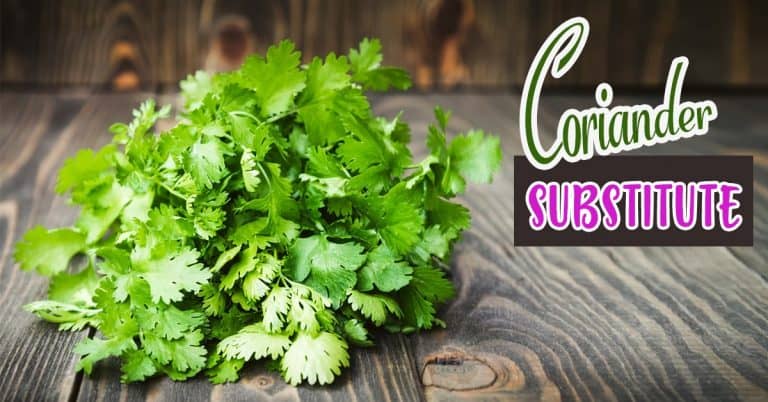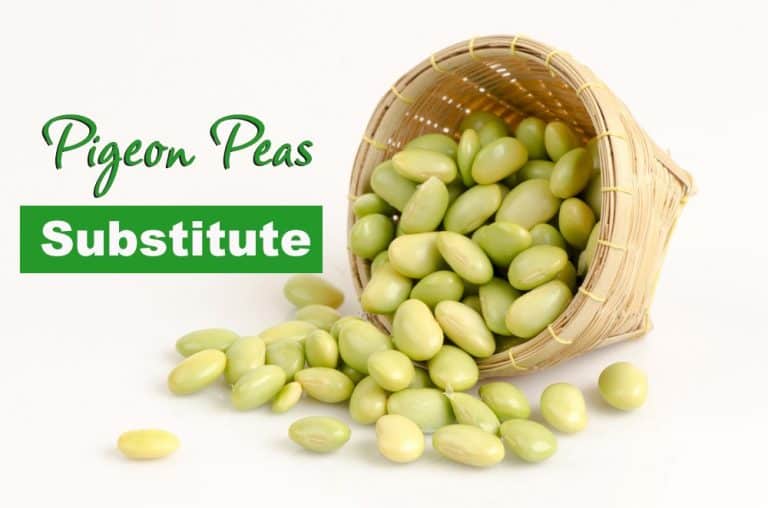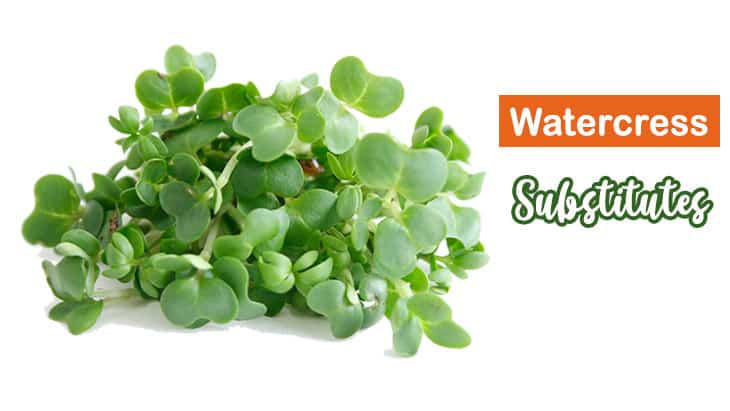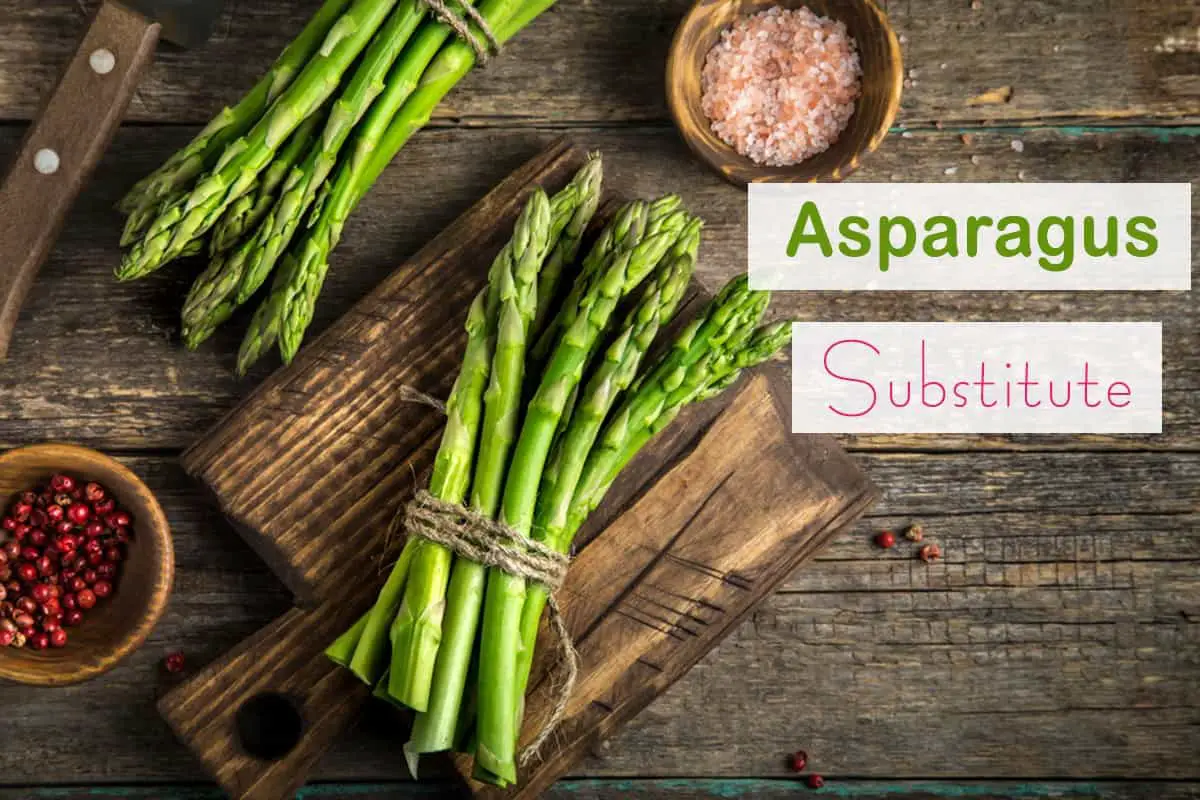
This article will provide you with helpful tips and recommendations for asparagus substitutes. However, before diving into them, let’s explore some characteristics of asparagus first to gain more fundamental insights.
Asparagus is famous for its rich nutrients and distinct taste. It mainly grows in the subtropical and temperate parts of the world. Essential nutrients that can be found in asparagus are potassium, antioxidants, fibers, and vitamins. These substances are suitable for people’s health and infant development.
There are several ways to cook asparagus. People usually steam it for their side dish. Sauteing asparagus with olive oil and serving with meat or fish is also a good recipe. Cooking asparagus in just a few minutes is a tip to achieve its best texture.
9 Excellent Asparagus Substitutes To Remember
Despite having high nutrients and delicious flavor, asparagus is not a favorite choice of many people. Thus, they start to find another type of vegetable with the same taste. If you’re not a fan of asparagus or you’ve just run out of it, take a closer look at some recommendations below.
1. Broccoli

Broccoli appears to be the best asparagus substitute. It is rich in nutrients like iron, potassium, fibers, and vitamins. Compared to asparagus, broccoli covers more grocery stores and markets at a lower price.
Broccoli has numerous health benefits. It can help lower cholesterol levels. Vitamin A from broccoli is good for people’s eyesight. Studies also show that eating broccoli helps people reduce the risk of heart disease and cancer.
How to prepare and cook broccoli:
Cooking broccoli is pretty much the same as cooking asparagus. The simplest and most popular method is steaming. You can steam it alone or with other vegetables to serve your meals. The time for cooking broccoli depends on which texture of it that you want.
Besides steaming, broccoli can be sauteed with olive oil. You can serve it as a great side dish for fish or meat, just like asparagus. If you don’t want it the two ways above, you can try others like eating raw broccoli in salads or roasting it then cooking with chicken or cheese.
Best broccoli recipes:
- Grilled beef with broccoli
- One-pan salmon and broccoli bake
- Roasted broccoli and Parmesan cheese
- Broccoli salad with bacon
Valuable tips:
For choosing the fresh broccoli, go for ones with green florets and firm stalks. Avoid any broccoli with yellow flowers. After buying, you better cook it already to get the freshest taste. If you want to store it properly, keep it dry in the refrigerator.
Ideally, to steam broccoli, wait for the hot and steamy water first before adding the broccoli to the steamer basket. The process to get broccoli done takes about 5 to 7 minutes. If you cut it smaller, less time is needed.
Read also: Broccoli Substitutes – Explore The Alternative Vegetables For Your Diet
2. Leek

Leek is another great asparagus substitute that you should use. It is an excellent source of folate, fiber, magnesium, and vitamins. These nutrients can make it a good replacement for asparagus though leek has a pretty different taste. Leek is not as expensive as asparagus. You can buy it at any market or supermarket at a reasonable price.
How to prepare and cook leek:
Cooking leek is not too complicated. Usually, the leek is added to soups or stews to get more flavors. It can be eaten raw too. Stir-frying leek is also an excellent method to get a side dish.
Best leek recipes:
- Leek and potato soup
- Leek, pea, and spinach soup
- Leek with roasted chicken or lamb
- Spaghetti with leeks
Pro tips:
White and light green leeks are the best. It’s good if the stalks are firm and crisp. Smaller and younger leeks provide better flavors and textures compared to bigger ones. Avoid any leeks that are primarily dark green or yellow on top. Withered stalks should be omitted too. It would be best to store unwashed leeks in the fridge to keep leeks as long as possible.
3. Celery

The taste might differ from asparagus when it comes to celery, but it’s a good asparagus substitute that you should try. Celery has long green stalks and tiny leaves on top. It is loaded with folate, potassium, antioxidants, and vitamins like vitamins A, C, and K.
Celery is well-known for its benefits for people’s health. Celery helps human blood pressure be stable and keeps the body fit. It’s good for digestion and liver operation. It also prevents inflammation and cancers.
How to prepare and cook celery:
Celery can be eaten raw tastily. If you go for raw celery, your dishes are fast-prepared but delicious. In case you want to cook it, steaming or sauteeing is a good idea.
Best celery recipes:
- Stir-fry beef and celery
- Tuna salad with celery and lemon
- Celery salad with boiled eggs
- Celery soup
Valuable tips:
You should avoid soft and wilted celery. The best ones are with firm and crisp stalks, green and fresh leaves. Brown or yellow batches won’t serve the best flavors. The darker celery has a stronger taste. If you prefer it a little bitter, opt for dark green stalks.
4. Green Beans

Green bean is a great idea for an asparagus substitute. It’s nutritious and tasty. Green beans have the same nutrients value found in asparagus, namely folate, potassium, fiber, iron, and vitamins.
Eating green beans is a fantastic way to improve our health. They decrease the risk of heart disease, diabetes, obesity, cancer, and so on. It also plays a vital role in improving bone health and protecting fertility during pregnancy.
How to prepare and cook green beans:
One specialty of green beans is that they can be cooked in many different ways. You can steam, sautee, bake, or fry them. This versatile feature makes it an attractive alternative for asparagus. However, if you want green beans to retain their best nutrition, steaming is the best choice.
Best green beans recipes:
- Steamed green beans and vegetables
- Roasted green beans
- Baked green beans with garlic and Parmesan
- Potato and green beans salad.
Pro tips:
Good green beans are firm and crisp. Any of them with discoloration or bruises should be omitted. Big and swollen pods are not a sign of good beans, so you should skip them too.
5. Lettuce

If you don’t have much time to prepare a meal, lettuce is a great choice. This veggie is served raw since it reaches the best texture and flavor without cooking. Lettuce is packed with minerals such as potassium, calcium, and magnesium. It’s also a good source of vitamins and folate. Beta carotene in lettuce also converts into vitamin A in the body.
Lettuce is cultivated widely since it quickly grows in any season. You can even buy its seeds and plant them in the garden. That makes this vegetable an ideal asparagus substitute.
How to prepare and cook lettuce:
Since eating raw lettuce provides the best taste, washing it carefully then placing it on the plate is enough. It’s not true that there’s a limited number of dishes from lettuce since we eat it raw.
With lettuce, there are many ways to create delicious flavors for your meals. You can make different salads, combine lettuce with other veggies, or make a great dressing to eat with lettuce.
Best lettuce recipes:
- Classic caesar salad with lettuce and egg yolks
- Lettuce and boiled or pickled vegetables
- Grilled bacon and lettuce
- Stir-fry beef and lettuce.
Pro tips:
If you want to get the freshest lettuce, opt for light to medium green lettuce heads. Its leaves should be crisp and bright. Avoid any wilted and rusty lettuce if you don’t want your dishes less attractive.
6. Green Peas

Another great asparagus substitute is green peas. They are incredibly nutritious with folate, fiber, iron, and vitamins. In addition, you can create delicious dishes from peas like the way you do with green beans.
If you have meals with green peas, you tend to be healthier. Green peas may support blood sugar control and people’s digestion. They also protect us from heart disease, diabetes, and cancer.
How to prepare and cook green peas:
You can steam green peas to retain their nutrients. Another way to cook them is by stir-frying with olive oil and garlic or onion. Season them with salt, pepper, or any spices to achieve the flavor that you want.
Best green peas recipes:
- Sauteed green peas
- Chicken soup with green peas
- Balsamic green peas salad
- Stir-fry green peas and mushrooms with rice
Pro tips:
When you buy green peas, choose unblemished, bright green, and plump pods. The peas inside should be sweet, glossy, and crunchy.
7. Spinach

Spinach is a great option for an asparagus substitute. It is a rich source of magnesium, potassium, and vitamins that are good for eye health and diabetes management. They also help to improve blood pressure and oxidative stress.
How to prepare and cook spinach:
You can eat raw spinach or cook it. One popular way to cook spinach is steaming or stir-frying it with oil and garlic. It can be served as a side dish or added to the main courses to achieve better flavors.
Best spinach recipes:
- Garlic sauteed spinach
- Creamed spinach chicken
- Creamy spinach soup
Pro tips:
Look for spinach with fresh and dark green leaves. It should have a fresh aroma and crisp texture as well. Any wilted and yellow bunches with a sour odor should be avoided.
8. Zucchini
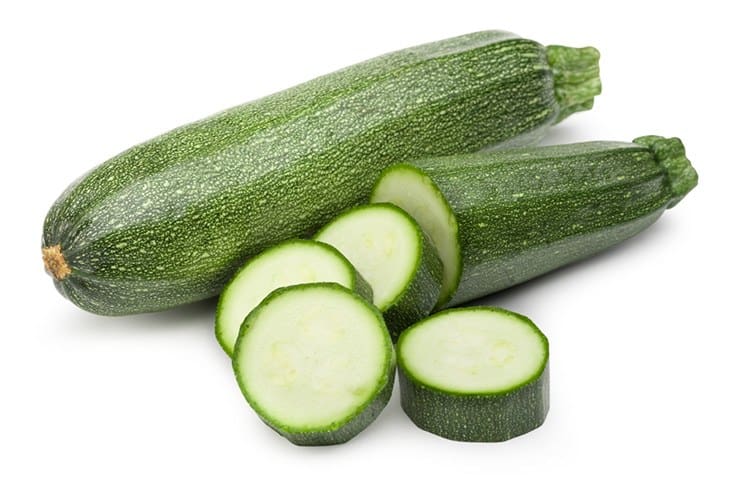
Zucchini is a perfect asparagus substitute due to the rich nutrients that it has. It is a great source of folate, vitamins, and potassium. That said, zucchini helps us prevent health issues such as diabetes or cancer. Eating zucchini is also an excellent way to improve digestion and eye health.
How to prepare and cook zucchini:
There are many ways to prepare the best zucchini dishes. If you want it fast, go for steaming or sauteing. Baking or stewing is also a popular method to enjoy its best taste.
Best zucchini recipes:
- Baked zucchini with Parmesan
- Grilled zucchini with lemon-scallion dressing
- Pasta with tomatoes and zucchini.
Pro tips:
If you want to have the best zucchini to serve your meals, go for small to medium-sized ones. It should be firm and shiny, free of blemishes and cuts. Fresher zucchini also has tiny hair and a stem attached (at least one-inch length)
9. Avocado

Avocado seems to be an excellent asparagus substitute. Though it’s not a vegetable, it’s a star in cooking. Additionally, avocado has plenty of nutrients that make it a great replacement for asparagus. The nutrients found are folate, magnesium, potassium, vitamins, and so on.
It is proven that eating avocado helps people to be healthier. In particular, avocado is good for our heart, vision, and digestion. It also protects us from chronic diseases like diabetes, hypertension, heart diseases, and so on.
How to prepare and cook avocado:
There’s no heat needed when making dishes from avocado. When the avocado is ripe, you can eat it directly. Cut avocado in slices and serve it with meat, eggs, or vegetables. Smashing it is also an excellent way to enjoy its fresh and buttery taste.
Best avocado recipes:
- Avocado salad with tomato, red onion, and lemon.
- Chicken tacos with avocado salsa
- Smashed avocado and tomato sandwiches
- Bacon avocado salad
Pro tips:
If you want to know whether the avocado is ripe, press it down by the stem. Many people press it right on the sides. This action leads to bruises on the avocado. You should make it on the top instead. If you can softly press it and the avocado still retains the shape, it’s ready to eat. If it leaves a dent on the avocado after pressing, this one might be brown inside and overripe.
Frequently Asked Questions
Do You Eat The Head Of The Asparagus?
The only part of asparagus that we can’t eat is the woody stem at the bottom. Therefore, before cooking asparagus, you need to discard this part for safer and better dishes. Cut it with a knife, or use your hands to bend and snap it to break off the stems.
Does Roasting Asparagus Destroy Nutrients?
Though roasted asparagus is a beloved dish of many people, roasting vegetables is usually seen to ruin the nutrients. Cooking veggies in any form results in a deficiency of their nutritious substances like vitamin B and C.
However, there’s a flip side that some other nutrients become more bioavailable when being cooked. For example, roasting or steaming asparagus releases more antioxidant compounds compared to raw eating.
Conclusion
These asparagus substitutes can help you achieve different dishes with new and delicious flavors. Give them a try and you’ll get nutritious meals for your families.


